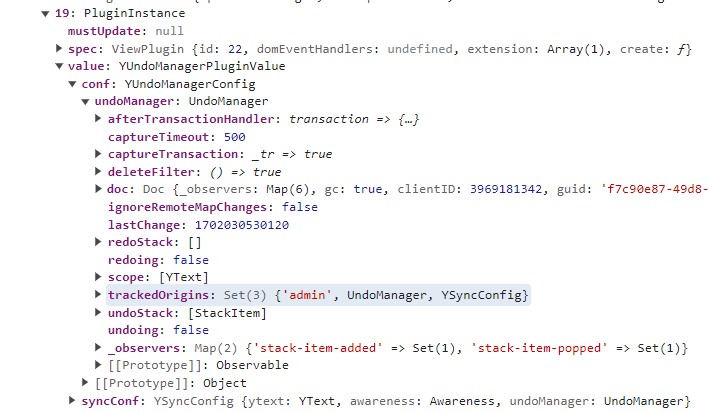I curious about how the yjs UndoManager is actually being used. I am puzzled because the undo stack is shared among all clients. So, for example, if user A inserts ‘X’; then user B inserts ‘Y’; and then user ‘A’ pops an item off the undo stack, the effect is that ‘Y’, not ‘X’ is removed. But this is unlikely to feel natural to users. When User A presses the undo button (or whatever the UI provides to pop an item off the undo stack) they almost certainly intend to undo their own action, not user Y’s action. If they wanted to get rid of Y, they would, I feel, be much more likely to use a ‘delete’ command.
Do you know of a use case in which a shared undo stack is appropriate?
I did a quick check and, for instance, Google Docs and tldraw both implement per-user undo stacks rather than one shared stack.
If you have implemented a per-user (i.e. per client) undo stack, how did you do it? How did you achieve persistence (i.e. the stack remains even if the user exits and resumes)? Do you care about dependencies e.g. User A inserts ‘CAT’, User B modifies it to ‘DOG’, User A tries to undo their action - with what result? Is DOG deleted (it is a modified version of User A’s inserted CAT) or does the undo fail (that is what happens with Google Doc - the undo silently fails).
Any thoughts or examples very welcome…
